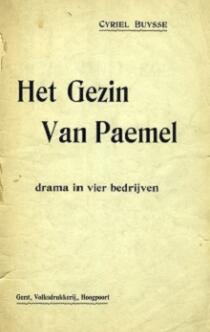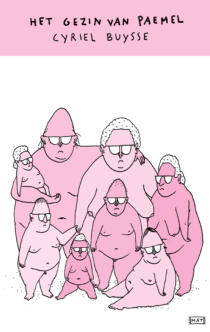The novel’s theme is so rich that new meanings and ideas are constantly being found in it. In 1919, Couperus wrote in a letter: “The Hidden Force is mainly concerned with the mysterious enmity of the Javanese land, atmosphere and soul towards the Dutch conqueror. This often hidden hostility is a mystical element in the book.” It was read and appreciated as such by contemporary readers: as a confrontation between the Western ideas of the colonialists in the former Dutch East Indies and the indigenous, oppressed Javanese people.
West versus East, with the Dutch civil servants and their entourage dealing with outwardly very respectful local authorities: humbly bowing before them, even literally walking with a scuttling gait. The colonialists have no control whatsoever over the secret resistance of the Javanese, which is repeatedly described as “an unspeakable mystery”. The Javanese live their own mysterious lives, hidden from the Western eye. Their own “hidden force”, their proud resistance to oppression, will eventually triumph in the novel, as is indicated in the opening sentence. The word “tragic” appears there no less than twice.
Couperus uses the story of the powerful civil servant Otto van Oudijck, a “ruler figure” who lives in a Javanese town, to illustrate the East-West divide. An extensive psychological portrait of him and his wife Léonie (a cheating femme fatale who flirts with her stepson and with the fiancée of her stepdaughter) makes it perfectly clear that their downfall is inevitable because they have no feeling for “the mystique of visible things on that secretive island”.
Van Oudijck’s family disintegrates. His wife disappears off to Paris and the resident retreats to a village with an indigenous woman and her family. Fear of the “hidden” force that manifests itself in all sorts of strange phenomena, such as table-turning and sirih-stained spit, has also struck their circle of Western friends.
Couperus’ contemporaries felt attracted to this mysticism, but they also enjoyed descriptions of the more relaxed morals of the colonials. There was “a lot of love done” in the East Indies, which gave the book a racy, “immoral” edge. Later, and certainly for today’s readership, there was recognition for Couperus’ very early, sharp and emphatic criticism of colonialism and the Europeans who “put their roots down in a country hostile to their blood”.
In the struggle between “Eastern resistance” and “Western ideas”, Couperus chooses the side of resistance: his critique is unequivocal. The East Indies are “a huge but exhausted colony, ruled from Holland with only one aim in mind: profit.” The ruler is “a little weak-minded leech”. This analysis has played an important role in raising awareness of colonial abuses in the past. The Hidden Force is, as a result, an extremely important novel.






